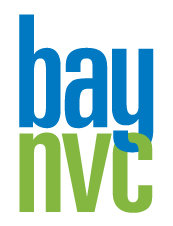This mini-series started on Aug 8, and this is the 7th post so far. The previous post was on Sep 10. Each of the posts can be read separately.
Working towards and creating change (as distinct from change happening, which is a constant in life) involves conscious choice and action. On the personal level, this means becoming more the person we would like to be, and creating new options for ourselves. On the social level, this means moving towards the world of our dreams. In either case, three things need to be in place:
- Clarity that what is happening is not to our liking, and having a clear sense of what we want instead. Only knowing we don’t like what is will not result in change. We need to have enough faith that something else is indeed possible to imagine mobilizing the resources necessary.
- Having or knowing how to materialize the resources needed to create the change, and trusting our capacity for accessing the resources. Resources here are both internal, in the form of skills, faith, consciousness, courage, presence and the like, as well as external, in the form of support from others, material resources where needed, access to the people with influence and the like. The faith in our capacity to access and mobilize resources is an irreducible part of what’s needed to move towards the change.
- Making the choice to take action. This is not a trivial step. Both personally and collectively we find ourselves in situations where we know we want something done, we know we can do it, and we still choose not to take action. The willingness to commit is the final element that moves us into action.
In the previous parts of this mini-series I have addressed in some detail the question of internal resources I see as necessary for creating nonviolent personal or social change. I do not intend to address the question of external resources, since this is not my expertise. Lastly, I am not, in this moment, focusing on the willingness to commit, which I may take up at another opportunity. In what remains I want to focus on the element of vision which is often sorely lacking in social change movements. I have often wondered what a social movement would do if by some stroke of miracle they became victorious. In my non-expert review of historical example, successful social movements rarely end up implementing systems that are in any fundamental way different from what they replace. Instead of thinking of this phenomenon as proof of how horrible human nature is, I tend to think of it as a cautionary tale with the moral of inviting us to have much clearer vision of what we are attempting to create instead of only working on what we oppose.
For anyone who accepts the radical notion of creating a world based on the principle of meeting needs as the core organizing principle, this means putting energy into envisioning in detail how different systems would work. At one and the same time this act of visioning supports us in knowing what we work for as well as in transforming our consciousness. Specifically, this activity frees us from the paralyzing belief that what is happening is the only possible way that life could be, and opens us in very practical and daily terms to the desire and subsequently the capacity to act differently and become daily agents of change.
Unless we can truly embrace the uncompromising faith that human collaboration is possible, we will secretly continue to believe that in some instances imposition and control are necessary. If we continue to believe that, however unconsciously, we will recreate such structures if we come to power. Here’s a powerful example of this principle. The people who created the Kibbutz movement in Israel were committed to economic equality and to sexual equality. They devoted endless hours to sitting together and envisioning what economic equality would look like, and what kind of institutions would make it possible, and then created those institutions, and sustained economic equality for decades (until unforeseen factors entered the equation, not the topic for now). On the other hand, as far as the evidence that I gathered some years ago shows, they didn’t ever dedicate such energy and time to envisioning sexual equality. As a result, as soon as babies were born, gender role division re-asserted itself by default.
My own passion and vision is for a world operating on the basis of attending to needs, human and otherwise. Accordingly, my visioning is about what a world operating on needs would look like. For you reading this, you may have different principles or core values that inform your longing for a different world, and I invite you to take the time to reflect on the concrete applications, the nuts and bolts of what you are hoping for, and to gather friends and groups to engage in the visioning. I have found that doing visioning is invigorating, generates hope, and contributes to motivation to keep working. Try it out.
In my next post on this topic I provide an example of my personal visioning in the economic sphere.

